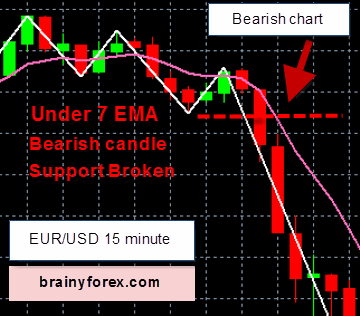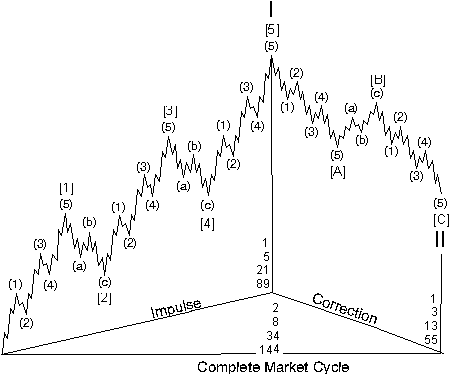What is Net Working Capital & How to Calculate: Formula
Contents:


On the other hand, it is highly improbable that a company will have the financial resources to accelerate its expansion rate if its working capital is tight. Just write the bank account number and sign in the application form to authorise your bank to make payment in case of allotment. ● Calculating net working capital requires accurate data on current assets and liabilities, which can be difficult to track if records are incomplete or out of date. ● Net working capital also does not take into account the impact of inflation, which can affect cash flow over time.

If a company has substantial positive working capital, then it ought to have the potential to speculate and grow. If an organization’s current property do not exceed its present liabilities, then it may have bother growing or paying again creditors, or even go bankrupt. As per wikipedia definition , Working capital is a financial metric that measures a company’s short-term operational liquidity. Working capital is calculated as a company’s current assets minus its current liabilities. A company with a positive working capital balance means that it has more assets than liabilities and is in good financial health.
The Working Capital Position helps the management in taking policy decisions regarding payment of dividend etc. This figure is calculated by subtracting the total liabilities from the total assets. A working capital calculation should be performed on a regular basis, such as monthly or quarterly.
To calculate a company’s net working capital, simply subtract its current liabilities from its current assets. These include accounts payable, like bills and payroll, to inventories and net receivables. In essence, net working capital measures the number of funds available to cover short-term debts or investments that need to be made in order for a business to stay financially afloat. Moreover, the net working capital definition is often used as a measure of liquidity, which helps creditors assess whether or not a company can meet its short-term debt obligations. The administration of working capital entails managing inventories, accounts receivable and payable, and cash. Working capital is a measure of an organization’s liquidity, operational effectivity and its quick-time period monetary well being.
Funds Flow Statement: Meaning & How to Prepare
Furthermore, businesses must also be aware of the limitations of net working capital in order to ensure that their financial models are comprehensive and accurate. Together, these measures will help businesses improve their financial performance and position them for long-term success. If necessary, take measures to improve the net working capital ratio to ensure the company is financially stable and equipped to meet its short-term debt obligations and investments. Net working capital is the difference between a business’ short-term assets and its short-term debts and liabilities.

● Changes in net working capital do not always indicate future performance; other factors may have a greater influence on overall profitability. You need to answer this question considering serval attributes of working capital discussed above. Owners of small and medium sized businesses may take advantage of its simple qualification criteria . A purchase price adjustment is a change to the original purchase price of an asset that is made after the sale has been completed. This type of adjustment is typically made when the asset is found to be worth less than the original purchase price.
Reserve Margin Working Capital
This tells the enterprise the quick-term, liquid assets remaining after short-time period liabilities have been paid off. Working capitalrepresents a company’s capacity to pay its present liabilities with its present belongings. A working capital true-up calculation is a way to measure and track a company’s liquidity over time.
- The negative of having fewer inventory reserves, on the other hand, is the possibility of stockouts, which might result in missed sales.
- It is often said that the way you manage working capital will make a big difference in the growth and continuity of business.
- These are not Exchange traded products, and the Member is just acting as distributor.
- Net working capital is calculated by subtracting a business’s present liabilities from its current belongings.
It may also indicate the business takes a long time to convert itsaccounts receivablesinto cash. It also represents you have extra cash that you should invest in other areas of business. The working capital ratio gives quick insights about the health of the business in terms of ratio. The working capital ratio is derived by dividing the current assets by current liabilities.
Bajaj Finserv eases this concern with its high-valueworking capital loan, which is available against minimum eligibility. This determine indicates that you may not be capable of pay your collectors and could end up in bankruptcy court docket sooner rather than later. A large amount of outstanding customer debt because of slow collections can even damage your figures. Not managing your working capital efficiently, will severely impact the day-to-day operations of the business. Ratio between 1.2 and 2.0 is typically a healthy sign of enough liquidity and strong overall financial health. Would remain unchanged if some of the same units increased the current obligations and assets of the company.
Another option is to shorten consumers’ credit terms, allowing them to make purchases on credit for a shorter period before paying for them. As in the last one, credit terms must be utilised with prudence since extremely short periods may persuade clients to purchase from rivals who offer better credit terms. Maintaining reduced inventory levels is still another option, which lowers the risk of losses due to outdated goods while simultaneously increasing efficiency. The negative of having fewer inventory reserves, on the other hand, is the possibility of stockouts, which might result in missed sales.
List of Optional Voucher we can get from
On the other hand, a negative working capital balance indicates that a company has more liabilities than assets and may have difficulty meeting its financial obligations in the short term. Or organisation may be determined by subtracting the current liabilities from the total current assets. Using this ratio, you can see whether a company has enough assets to cover its short-term debts.
The rise of FranklinWH in home energy storage – Solar Builder Magazine
The rise of FranklinWH in home energy storage.
Posted: Thu, 04 May 2023 15:33:43 GMT [source]
we can see working capital figure changing stranded in the market, or commodities delivered to clients who have not paid, are not regarded as valuable for resolving debts. The working capital adjustments are the items on the balance sheet that are used to calculate the working capital. These items include, but are not limited to, accounts receivable, inventory, and prepayments. 1.you need to identify all of the current assets and liabilities for your company.
24 years old Early Childhood (Pre-Primary School) Teacher Charlie from Cold Lake, has several hobbies and interests including music-keyboard, forex, investment, bitcoin, cryptocurrency and butterfly watching.
Which is used to control short-term debt and operating expenditures both now and in the future. A ratio over two often implies that the company has uninvested assets, representing a squandered opportunity. At its most basic level, it consists of just the assets necessary to keep the company’s activities running smoothly. Note that the expansion rate and production scale constantly influence the fixed working capital required. Notes paid and invoices owing, together known as trade credit, are a source of immediate operational capital for a business.
For instance, if a company can better handle its stock and its accounts receivable, the corporate’s cash and liquidity will improve. The working capital that a company has to work with is calculated as its current assets minus current liabilities. Good working capital management also keeps cash flowing, thus enabling the company to generate enough cash to fuel its own growth rather than raising debt from outside.
Working capital refers to the distinction between your company’s current assets and present liabilities. In accounting, the term “present” refers to assets you could convert into cash or liabilities that are due in lower than 12 months. Typically, these liabilities are brief-term loans somewhat than long-time period debt similar to an unique loan if you opened your business. All debts a corporation owes or will be due within the next 12 months are collectively considered current liabilities. Since current liabilities reflect the sum of money a firm will pay shortly, they should be closely monitored. Businesses may find it difficult to guarantee they have adequate cash on hand to cover their responsibilities.
Cash on hand, inventory, accounts payable, and accounts receivable are just a few examples of what is contained in a company’s balance sheet. It is both a short-term financial indication and a measure of a company’s overall performance in the near term. The business anticipates receiving economic gains in the upcoming 12 months are known as current assets. Since they indicate the resources a firm has at its disposal to produce revenue and profit, current assets are significant. For a business to continue operating and satisfy its short-term obligations, it has to have enough current assets.
Components of working capital
Current liabilities come in various forms, such as short-term loans, accounts payable, and accumulated expenses. This percentage is arrived at by merely dividing the current belongings by the current liabilities. If the answer is less than 1.zero, this indicates the corporate has a negative working capital with too few liquid assets to cowl the quick time period bills. On the other hand, if the ratio is above a 2.zero this might indicate poor administration of the capital.
The Kraft Heinz Co (KHC) Q1 2023 Earnings Call Transcript – AlphaStreet
The Kraft Heinz Co (KHC) Q1 2023 Earnings Call Transcript.
Posted: Wed, 03 May 2023 09:15:00 GMT [source]
These might be difficult to collect or even impossible in some circumstances, similar to receivables. The terms and payment structure set up with suppliers affect the amount of money owed to them at any given time, thus affecting net working capital. Track changes in net working capital over time to evaluate the company’s financial health. ● It also provides the business liquidity and flexibility, meaning it can cover unexpected expenses or take advantage of new investment opportunities when they become available. In case of working capital deficits, you can avail additional funds to meet your liquidity requirement.
This formula provides insight into how much cash a company/business has available to meet its short-term debt obligations and investments. By calculating this figure, investors and creditors can better assess how solvent a company is and whether or not it can stay financially afloat. Working capital management is the everyday process of managing all the aspects of the company’s cash flow to be able to pay for expected and unexpected expenses.
Another approach is to be more proactive in pursuing unpaid accounts receivable; however, when collection efforts are unduly aggressive, there is a risk of upsetting clients. ● Net working capital can also be used in forecasting sales and calculating the cost of goods sold, further helping companies gain insight into their financial standing. This figure reflects the amount of money customers owe the company, directly affecting net working capital. The company thus has a net working capital of Rs. 60,000, an amount that it can use for its short-term obligations.
The distinction between a company’s current assets and liabilities is referred to as net working capital. It serves as a gauge of a company’s short-term financial stability, liquidity, and capacity to make effective use of its resources. The ideal situation is to have a positive net working capital balance, which is achieved by having more current assets than current liabilities. Net working capital is a critical metric used to measure a company’s liquidity, financial stability, and overall performance.
The working capital figure, which is also known as working capital, is defined as a company’s current assets minus its current liabilities. The Funds Flow Statement Analysis helps the investors to decide whether the company has managed the funds properly. It also indicates the Credit Worthiness of a company which helps the lenders to decide whether to lend money to the company or not. It helps the management to take policy decisions and to decide about the financing policies and Capital Expenditure for the future.
Net working working capital is a measure of a company’s liquidity and refers back to the difference between working current property and operating present liabilities. In many circumstances these calculations are the same and are derived from company money plus accounts receivable plus inventories, much less accounts payable and less accrued bills. A managerial accounting strategy specializing in sustaining environment friendly levels of both components of working capital, current belongings, and current liabilities, in respect to each other. Working capital management ensures a company has enough cash move to be able to meet its short-term debt obligations and working expenses. Your final aim will be to be able to continue the corporate’s day-to-day operations with sufficient cash move to cover short term debts in a timely method and to additionally deal with operational expenses.
- Most of the selections that you will be making will be contained inside the subsequent twelve months and likewise shall be reversible, should that be essential.
- A large amount of outstanding customer debt because of slow collections can even damage your figures.
- A managerial accounting strategy specializing in sustaining environment friendly levels of both components of working capital, current belongings, and current liabilities, in respect to each other.
- A higher NWC ratio suggests that the company has more of its current assets than it does of its liabilities, thus giving them an advantage when confronted with meeting its short-term financial demands.
Assets are what a enterprise owns and are liquid, or current, if they’ll shortly be converted to money and shall be used within one 12 months. Liabilities are what a enterprise owes and are present in the event that they must be paid within one yr. To calculate working capital, you need to consider all the current assets and current liabilities of the business. Current assets are those which you can convert into cash in the short-term, usually, 1 year and current liabilities include all short-term debts. Unless the company chooses to restock its inventory, there will be no change in working capital.


